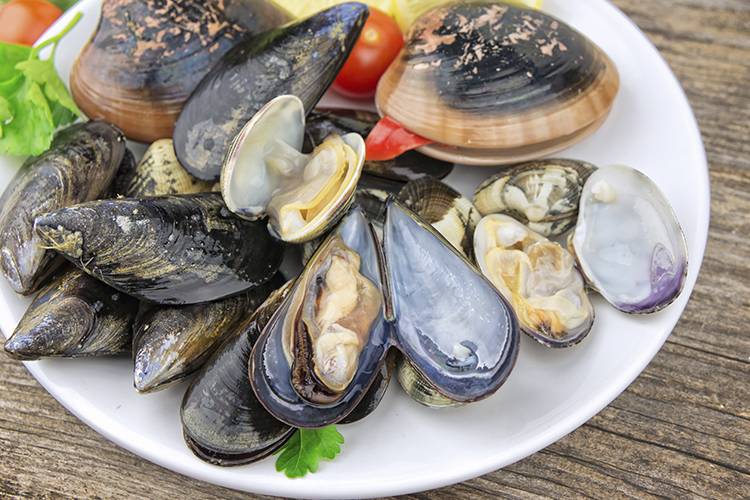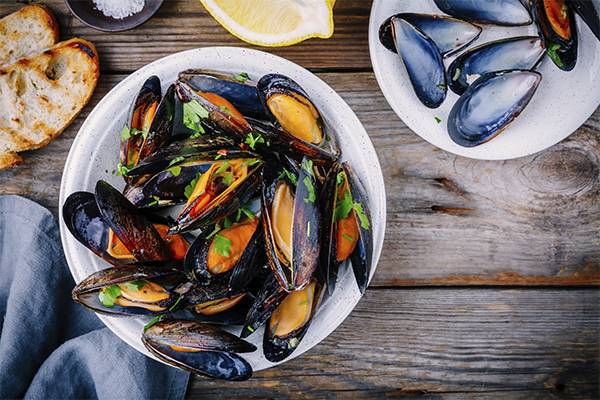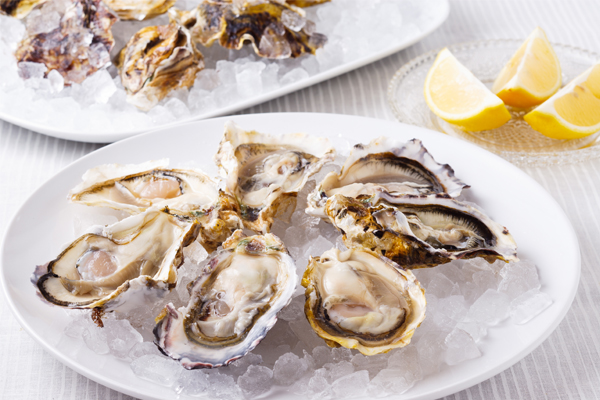Types of molluscs
Cockles, along with clams and mussels, are the best-known edible bivalve molluscs. But there's more, like baby clams, oysters and razor clams. Bivalve molluscs are so called because their shell has two parts called valves. They live in the sea, usually attached to rocks or buried in sand, and breathe through gills!
fresh food
Share

Clams:
- Fine clam or Carril Clam: in the region of Galicia where they are produced, their shell has a 'grid' formed by intersecting radial and concentric furrows which are more marked at the extremities. Their colour varies between white and light brown, depending on the sand where it is reared.
- Japanese clam: its shell is a dark, toasted, grey and black colour with very marked grooves that also form grids (more marked than those of the fine clam). Italy is one of the countries where it is intensively reared.
- Slug clams: grey or cream in colour with brown spots, more oval in shape. It has concentric lines that intersect with finer radial lines, but do not form grids like the fine clam.
- Blond or red clam: its shell is smooth and brighter than other clams, and colours range from yellow, pinkish brown or with reddish-brown spots.
Baby clams
Baby clams are mainly found in the Mediterranean Sea, the Black Sea and the south Atlantic coast of the Iberian Peninsula. Their size is smaller than the clam.

Cockles
Cockles have two medium-sized symmetrical shells with very marked grooves in the shell. They are located on sandy bottoms of the Mediterranean and Atlantic Seas.
Mussel
- Galician mussel: soft and juicy, yellow or reddish in colour, more intense in females than in males. It is the best known and most popular mollusc in our country. The largest production is in the Galician Rías, although we can also find it in the Mediterranean. They are cultivated in troughs, where they spend about a year before they reach the market.
- Valencian Mussel: is grown in the port of Valencia and Sagunto. Its size is smaller than the Galician mussel, it is also softer on the palate and has much more flavour. The season runs from April to August.
- Ebro Delta Mussel: its main characteristic is that it is raised in the waters of the River Ebro estuary. They are renowned for their exquisite meat, which is of a hard consistency.
Wedge clam
Wedge clam, also known as a tellin, can reach up to 4 centimetres in length. It has an oval shape and is whitish grey or brown in colour.
Oysters
- Common oyster: its habitat is the Atlantic, although we also have them in the Mediterranean. It lives on sandy and rocky bottoms.
- Curly oyster: may be confused with the common oyster, although it is more elongated and concave.

Scallops
Abundant in Galicia, they live on sandy or gravel bottoms near the coast, at depths of up to 100 metres. The upper shell is reddish to yellowish brown.
Razor clams
White to light brown in colour, with brown or reddish stripes and a curved shell. They are found in the Mediterranean Sea and the Atlantic.
Nutritional value
-They have a large amount of protein of high biological value, providing us with all the essential amino acids.
In general, they are low in fat and cholesterol (although it depends on the species we eat), and therefore also in calories.
They have a distinct presence of vitamins A and B, and in terms of minerals, contain zinc, phosphorus, iron, iodine and potassium.
Did you know that...
The age of clams can be calculated by counting the rings of their shells. In cold weather, growth slows down, so a darker ring forms, and in summer, growth is faster and the ring that forms is a lighter colour.






